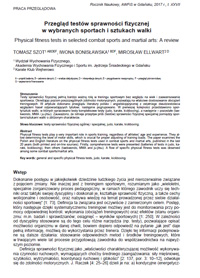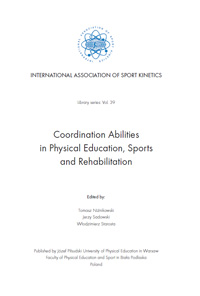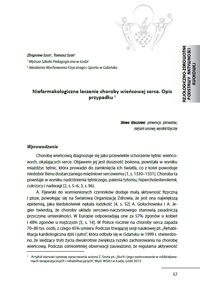EEG neurofeedback lowers the stress reaction in psychomotor abilities execution level during analog moon mission
Neurofeedback EEG obniża reakcję stresową na poziom realizacji zdolności psychomotorycznych podczas analogowej misji księżycowej
73rd International Astronautical Congress (IAC), Paris, France, 18-22 September 2022 / POSTER

Dornowski M, Gotner K, Szot T, Sokolowska I, Wilczyńska D, Duda D, Szwarc A, Maznychenko A, Sawicki P, Elwertowska A, Mintus A, Orzechowski L (2022)
- Abstract There is a tendency for multiple cases in the human body where the stressors might affect the body function. Stressor usage appears a a more beneficial due to reduction of the negative stress exposure, which can be achieved through neurofeedback training. Twenty analog astronauts (female and male) was exposed to two weeks isolation stressor. During analog moon mission neurofeedback EEG was used in half of the subjects (experimental group). Preflight and postflight measurements included selected Vienna System Tests: CORSI - measures the storage capacity of spatial working memory; SIGNAL - measures long-term focused attention and the visual differentiation of a relevant signal when distractor signals are present, signal detection theory describes the perception of weak signals against a constantly changing background. Achieved results allow us to incorporate neurofeedback EEG in psychomotoric abilities execution level during prolonged isolation as a method of lowering the stressor effects influence (maintaining the execution efficiency). Keywords stress, psychomotor abilities, isolation, neurofeedback EEG
- Pobierz plik PDF/download PDF file
 (poster) (poster)
|
Rehabilitacja kończyny górnej po złamaniu guzka większego
kości ramiennej, uszkodzeniu więzozrostu barkowo-obojczykowego
i zerwaniu ścięgna mięśnia nadgrzebieniowego. Opis
przypadku
Rehabilitation of the upper limb after fracture of the larger
humerus bone, damage of the bracholar-clavicular syndesmosis
and rupture of the supraspinous muscle tendon. A case report

Szot Z, Szot T (2018)
- Streszczenie W artykule omówiono ćwiczenia i ich zastosowanie w rehabilitacji stawu barkowo-
-obojczykowego u osoby 78-letniej. Z dostępnej literatury wynika, że terapia osób
starszych jest powolna i nie jest pewne, czy zastosowanie odpowiednich ćwiczeń jest
w stanie przywrócić kończynę górną do stanu sprzed kontuzji. Postawiono następującą
hipotezę: przy odpowiednio dużej liczbie powtórzeń ćwiczeń, osiągnięta zostanie
znacząca poprawa zdolności ruchowej w uszkodzonym stawie w stosunkowo krótkim
czasie. Uzyskane rezultaty potwierdziły hipotezę, że dzięki intensywnym ćwiczeniom
wspartym zabiegami fizykoterapeutycznymi można osiągnąć znaczącą poprawę funkcjonowania
tej kończyny. Słowa kluczowe rehabilitacja, kończyna górna, staw barkowo-obojczykowy
- Abstract The paper discusses exercises and their application in rehabilitation of acromioclavicular joint in
a 78-year old person. The available literature suggests that therapy of elderly people is slow and it
is not certain if the application of exercises would restore the arm to the state from before the accident.
A hypothesis was formulated: after the application of a large number of repeated exercises,
the joint with contusions will achieve significant motion ability in a relatively short time. The obtained
results confirmed the hypothesis - after intensive exercises and physiotherapy, a significant
progress in limb mobility can be achieved. Keywords rehabilitation, upper limb, acromio-clavicular joint
- Pobierz plik PDF/download PDF file
 (pełny tekst/full article) (pełny tekst/full article)
|
Przegląd testów sprawności fizycznej w wybranych sportach i sztukach walki
Physical fitness tests in selected combat sports and martial arts: a review

Szot T, Bonisławska I, Ellwart M (2017)
- Streszczenie Testy sprawności fizycznej pełnią bardzo ważną rolę w treningu sportowym bez względu na wiek i zaawansowanie sportowca, pozwalając na właściwe dostosowanie obciążeń treningowych. W artykule dokonano przeglądu metod oceny sprawności fizycznej (szczególnie testów sprawności fizycznej specjalnej) oraz podejmowanych badań w sportach/sztukach walki w literaturze polskiej i angielskojęzycznej ostatniego dwudziestolecia. W pierwszej kolejności przedstawiono sporty/sztuki walki, w których opracowano testy kompleksowe (judo, karate, kickboxing), a następnie pozostałe (taekwondo, MMA i ju-jitsu). Sporządzono także zestawienia badań, które służyły analizie poszczególnych komponentów składających się na jakość zadania ruchowego. Zauważono, że istnieje przepływ prób (testów) sprawności fizycznej specjalnej pomiędzy sportami/sztukami walki o zbliżonym charakterze. Słowa kluczowe testy sprawności fizycznej ogólnej i specjalnej, judo, karate, kickboxing
- Abstract Physical fitness tests play a very important role in sports training regardless the age and experience of sportsmen. They allow to determine the proper adjusting of training loads. The paper examines the Polish and English literature on the physical fitness tests (especially specific fitness tests) used in combat sports/martial arts and undertaken research, published in the last 20 years. Firstly the comprehensive tests were presented (judo, karate, kickboxing), then others (taekwondo, MMA and ju-jitsu). The sets of studies were also prepared, which show researchers’ interest in the area of the quality of the motor task. A flow of specific physical fitness tests was observed among some combat sports/martial arts. Keywords method of exercise serial repetitions, intensity of exercises, loads
- Pobierz plik PDF/download PDF file
 (pełny tekst/full article) (pełny tekst/full article)
|
Limb rehabilitation after Achilles tendon rupture. Case study
Rehabilitacja kończyny po zerwaniu ścięgna Achillesa. Opis przypadku

Szot Z, Szot T (2016)
- Abstract The Achilles tendon is the biggest tendon in the human body. Its rupture is a common injury with athletes. In the current source literature, there are no clear-cut data concerning the duration of rehabilitation, type and number of exercise repetitions, and the intensity of their application together with the patient’s motivation. The study describes the case of a 50-year-old ex-athlete, with no addictions, taking no drugs. The method of serial repeated exercises was applied. The aim was to answer the question: How long will it take to rehabilitate a leg to its full motion ability and how many repetitions should be performed to restore it to its normal condition? The hypothesis was constructed: By applying a large number of exercise repetitions and significant training loads, the leg will be restored to its full motion ability in a relatively short period of time. Rehabilitation took 162 days. During this period, the rehabilitation included 67,093 various tensions and raises, the loads of 169,391 kg and 50 km of walking in diversified terrain. In the crucial 46 days of exercising, a total of 54,370 tensions of calf triceps (triceps surae) under plaster cast were performed. On the 42nd day of rehabilitation, the number of these tensions amounted to 8,200. The rehabilitation resulted in full motion ability. Keywords method of exercise serial repetitions, intensity of exercises, loads
- Streszczenie Ścięgno Achillesa jest największym ścięgnem w organizmie ludzkim. Jego zerwanie jest dość częstym urazem u sportowców. W dotychczasowej literaturze przedmiotu brak jest wymiernych danych dotyczących czasu trwania usprawniania, rodzaju i liczby powtórzeń ćwiczeń a także intensywności ich stosowania w połączeniu z motywacją rehabilitowanego. Opisano przypadek osoby 50-letniej – byłego sportowca, bez nałogów, nie przyjmującego lekarstw. Zastosowano metodę seryjnych powtórzeń ćwiczeń. Starano się odpowiedzieć na pytania: jak długo będzie trwał proces usprawniania kończyny i ile powtórzeń ćwiczeń należy wykonać, by doprowadzić ją do normalnego stanu? Postawiono hipotezę: Przy zastosowaniu dużej liczby powtórzeń ćwiczeń i znaczących obciążeń treningowych kończyna zostanie doprowadzona do pełnej sprawności fizycznej w stosunkowo krótkim czasie. Rehabilitacja trwała 175 dni, a efektywnie ćwiczono 134 dni. W tym okresie wykonano 82151 różnych napięć i wspięć, obciążenia wyniosły 169391 kg oraz wykonywano chód w zróżnicowanym terenie przez 50 godzin. W kluczowym okresie 46 dni ćwiczeń, pod opatrunkiem gipsowym wykonano łącznie 54370 napięć mięśnia trójgłowego łydki (triceps surae). Liczba tych napięć w 42. dniu rehabilitacji wyniosła aż 8200. Efektem podjętej rehabilitacji była pełna sprawność fizyczna. Słowa kluczowe metoda seryjnych powtórzeń ćwiczeń, intensywność ćwiczeń, obciążenia
- Pobierz plik PDF/download PDF file
 (pełny tekst/full article) (pełny tekst/full article)
|
Niefarmakologiczne leczenie choroby wieńcowej serca. Opis przypadku
Non-pharmacological treatment of coronary heart disease. Case study

Szot Z, Szot T (2016)
- Streszczenie Przedstawiono rezultaty sześcioletniego stosowania ćwiczeń w rehabilitacji choroby wieńcowej serca mężczyzny w wieku 58 lat, bez nałogów i nadwagi, sprawnego fizycznie. Wyniki badań klinicznych wskazały: wysoki poziom kreatyniny, cholesterolu, trójglicerydów, obniżenia odcinka ST i upośledzenie relaksacji lewej komory serca. Równolegle z ćwiczeniami stosowano odpowiednią dietę niskocholesterolową. W rehabilitacji zastosowano metodę seryjnych powtórzeń ćwiczeń i wyznaczono dystanse marszów i chodów w zróżnicowanym terenie. W celu monitorowania liczby powtarzanych ćwiczeń (objętość i intensywność) prowadzono ich rejestr w miesięcznej karcie usprawnienia ruchowego. Harmonogram rehabilitacji rozłożono na 3 etapy, w których określono stan wyjściowy, zastosowanie rodzaju ćwiczeń i zaproponowano dietę. W trakcie rehabilitacji pokonano 50132 schody, w gimnastyce uzupełniającej wykonano 50599 powtórzeń ćwiczeń i uskuteczniono chody w czasie 302 godzin. Po zakończeniu rehabilitacji wykonano próbę wysiłkową, będącą miernikiem wydolności serca na obciążenia, wykazując dobrą tolerancję na wysiłek. Przeprowadzona rehabilitacja niewydolności serca w prewencji pierwotnej upoważnia do twierdzenia, że zastosowanie ruchu (treningu) w dużym stopniu zastąpić może leczenie farmakologiczne. Słowa kluczowe prewencja pierwotna, mięsień sercowy, wysiłek fizyczny
- Abstract The paper presents the results of a six-year-long process of applying exercises in rehabilitation after coronary heart disease of a 58-year-old male, without addictions, overweight, physically fit. Clinical tests showed a high level of creatinine, cholesterol, triglycerides, ST segment depression, and impaired LV systolic relaxation of heart. The rehabilitation schedule was divided into three stages which stipulated the starting point, types of exercises applied, and suggested diet. After the end of rehabilitation period an exercise test was carried out, measuring heart efficiency with the load, which showed appropriate effort tolerance. The rehabilitation of heart failure carried out during primary prevention entitles the author to claim that application of motion (training exercises) may become a substitute of pharmacological treatment. Keywords primary prevention, heart/cardiac muscle, physical activity
- Pobierz plik PDF/download PDF file
 (pełny tekst/full article) (pełny tekst/full article)
|
Pełna lista publikacji dostępna na / Complete list of publications available here: 










 Odbiorniki GNSS (GPS i in.) w sporcie i rekreacji
Odbiorniki GNSS (GPS i in.) w sporcie i rekreacji  Monitorowanie lokomocji sportowców
Monitorowanie lokomocji sportowców  Pozostałe
Pozostałe 